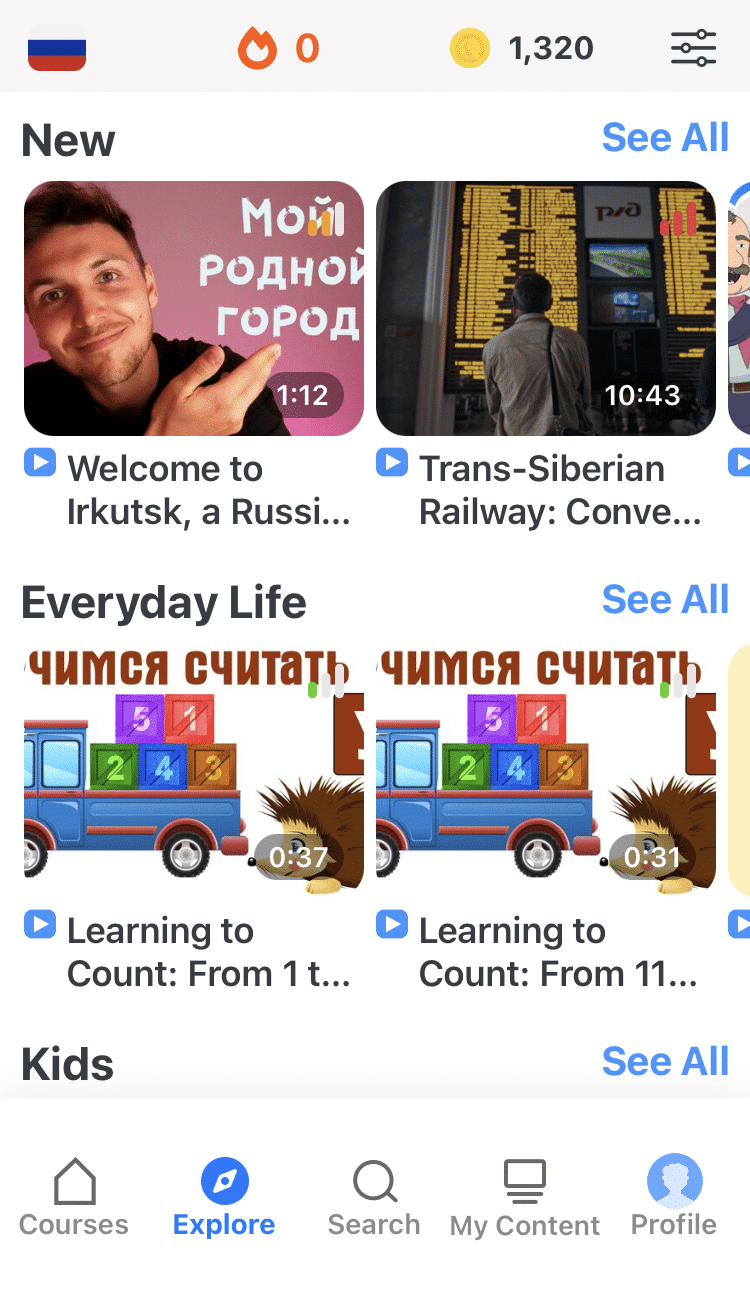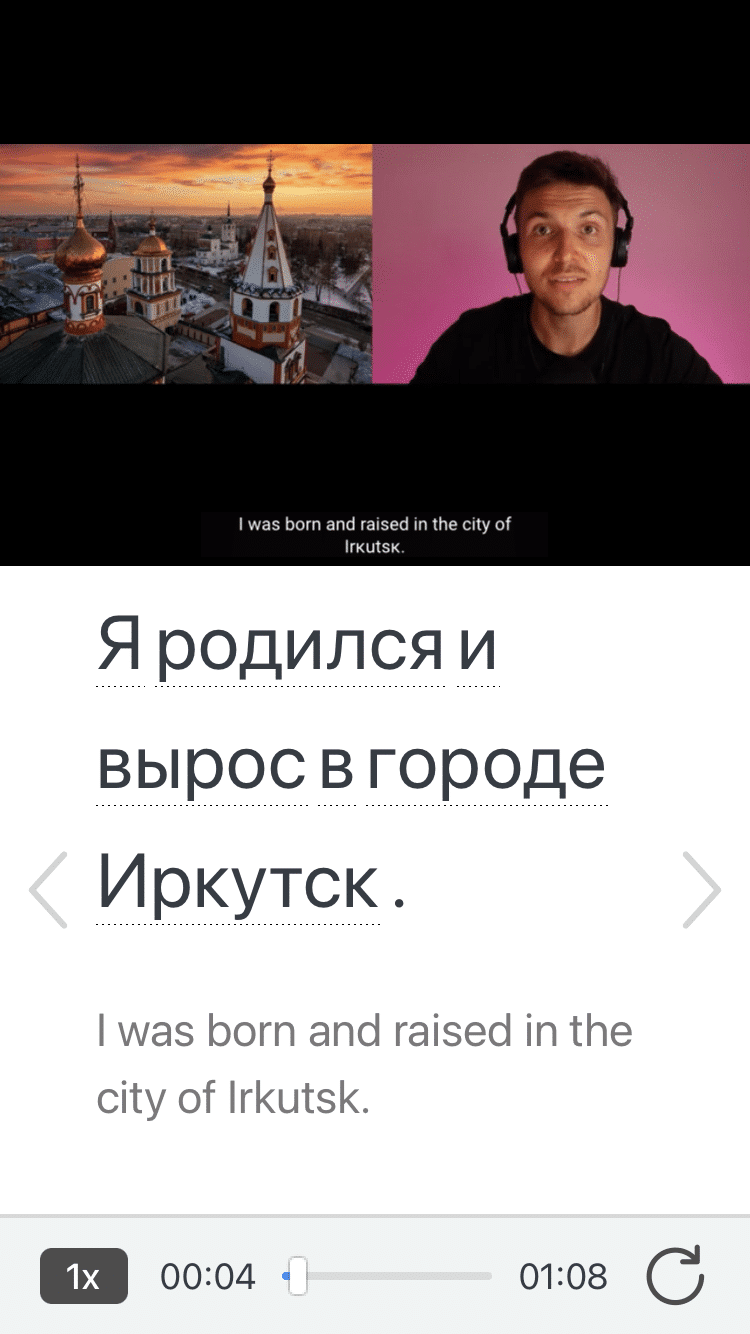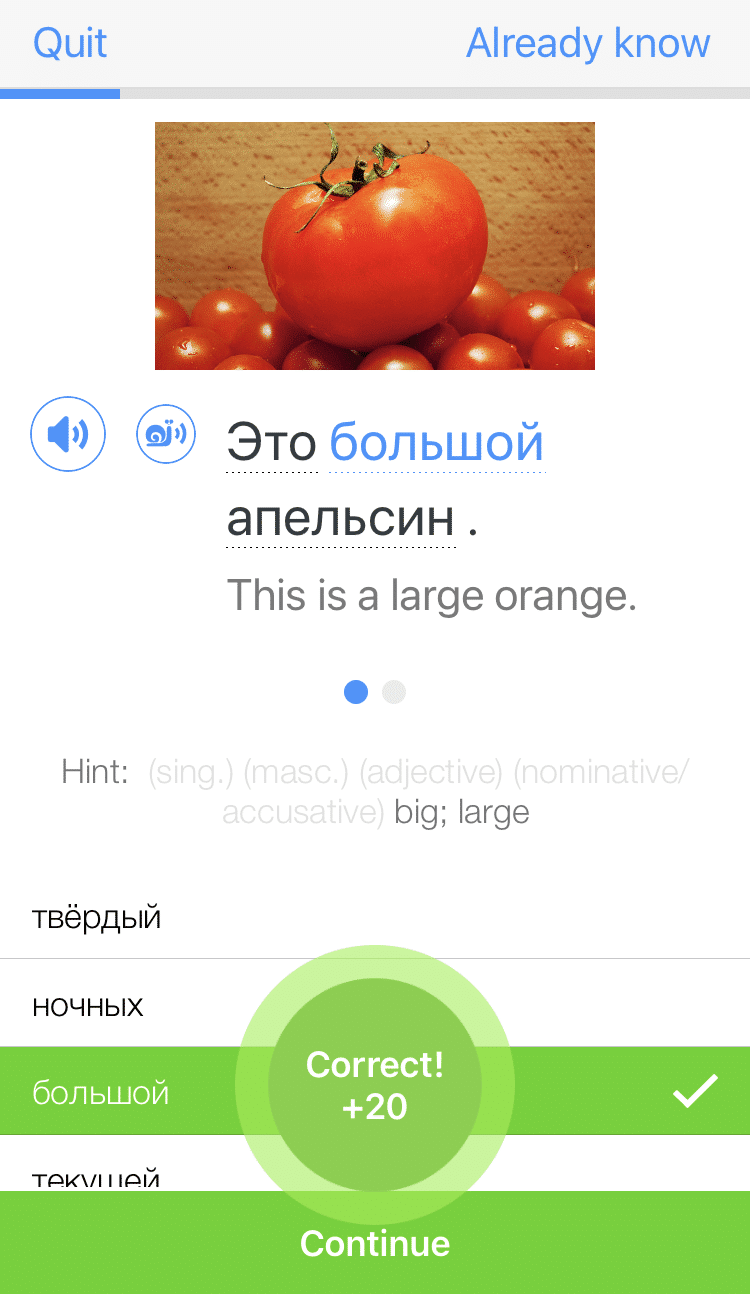
14 Best Russian Cartoons for Language Learning
What if I told you that through the power of cartoons, the most adorable form of entertainment, you can improve your Russian skills? It’s true—it’s even backed up by science.
So if you want to learn Russian, give these 14 great cartoons a try, organized from beginner to advanced.
Contents
- 14 Russian Cartoons for Animated Language Learning
- 1. “чебурашка” (Cheburashka)
- 2. “Лунтик” (Luntik)
- 3. “Ну, погоди!” (Well, Just You Wait!)
- 4. “Ёжик в тумане” (Hedgehog in the Fog)
- 5. “Маша и Медведь” (Masha and the Bear)
- 6. “Смешарики” (GoGoRiki)
- 7. “Малыш и Карлсон” (Smidge and Karlsson)
- 8. “Добрыня Никитич и Змей Горыныч” (Dobrynya and the Dragon)
- 9. “Крылья, ноги и хвосты” (Wings, Legs and Tails)
- 10. “Винни-Пух” (Winnie the Pooh)
- 11. “Трое из Простоквашино” (Three from Prostokvashino)
- 12. “Летучий корабль” (The Flying Ship)
- 13. “Гора самоцветов” (A Mountain of Gems)
- 14. “Бременские Музыканты” (The Bremen Town Musicians)
- Why Use Cartoons to Learn Russian?
- And One More Thing...
Download: This blog post is available as a convenient and portable PDF that you can take anywhere. Click here to get a copy. (Download)
14 Russian Cartoons for Animated Language Learning
1. “чебурашка” (Cheburashka)
Level: Beginner
“Cheburashka” is the name of the adorable character who starred in several animated films (including “Gena the Crocodile,” “Cheburashka” and “Shapoklyak”). He rose to popularity in the late 1960s, but he’s still beloved to this day.
Cheburashka is a bit of an oddball. Described as an “animal unknown to science,” he looks like a sort of cross between a bear and a monkey. He inadvertently arrives in a crate at a store in Russia where he doesn’t quite fit in.
Cheburashka is a huge star internationally, particularly in Japan. Regardless, anyone with an eye for cuteness can’t help but fall in love with the little fellow.
“Cheburashka” is a classic, so it’s great for any Russian student. Beginning students will find it particularly useful, though, because this video has English subtitles to help you along. Additionally, there’s a lot of written text, so you can practice your reading as well. Furthermore, there isn’t a lot of dialogue so you’ll have plenty of time to translate in your head if you need to.
Watch it on YouTube
Tip: You can find “Cheburashka,” some other cartoons from this list and even more Russian-language cartoons on FluentU.
FluentU takes authentic videos—like music videos, movie trailers, news and inspiring talks—and turns them into personalized language learning lessons.
You can try FluentU for free for 2 weeks. Check out the website or download the iOS app or Android app.
P.S. Click here to take advantage of our current sale! (Expires at the end of this month.)
2. “Лунтик” (Luntik)

Level: Beginner
“Лунтик” follows the adventures of a cute, furry little creature named Luntik. Little Luntik is new on earth, having just fallen from the moon. He befriends various animals and insects before going on an exciting adventure. The adorable level is high on this one, so it’s easy to keep watching while you’re learning Russian.
The show is aimed at preschoolers and focuses on teaching morals, so you can expect the language to be simple and easy to understand for beginners.
Watch it on YouTube
3. “Ну, погоди!” (Well, Just You Wait!)
Level: Beginner
“Well, Just You Wait!” is a series that debuted in 1969. New episodes have debuted as recently as 2006. It follows a wolf trying to catch a rabbit, so it may remind American viewers of “Wile E. Coyote” or “Tom and Jerry.”
This cartoon relies almost entirely on entertaining animation. Most of the Russian language that you’ll encounter will be in the credits. Therefore, this is great for very beginning students to see written Russian, enjoy Russian music and familiarize themselves with a classic Russian cartoon.
Watch it on YouTube
4. “Ёжик в тумане” (Hedgehog in the Fog)
Level: Beginner
Besides having an incredibly awesome name, “Hedgehog in the Fog” is also an incredibly adorable short film. While it’s from 1975, it feels much more current.
In this film, a hedgehog goes to visit his bear friend, but on the way he encounters thick fog that makes the world around him very frightening.
This particular video offers English subtitles, making it a great choice for any level of Russian student. Dialogue is limited and clear, so picking out words won’t be overly challenging.
Watch it on YouTube
5. “Маша и Медведь” (Masha and the Bear)
Level: Beginner
The “Masha and The Bear” series started in 2009 and is still running today. The series is based on Russian folklore. It follows Masha, a mischievous child and her bear friend. While Masha goes on adventures, The Bear accompanies her and tries to avert disasters.
Though Russian in origin, “Masha and The Bear” has since gone international. It’s available in 25 languages and has appeared in 100 countries. You may have also spotted it on Netflix.
This cartoon series is great for any level of Russian learner, but it’s particularly useful for beginners. There isn’t a lot of dialogue, so you won’t be overwhelmed. However, if you’re concerned about not being able to understand what they’re saying, it’s easy to find English-language versions of all the episodes. If you watch these ahead of time, it will be easy to transition to the Russian versions without missing anything.
Watch it on YouTube
6. “Смешарики” (GoGoRiki)
Level: Beginner
“Смешарики” is a Russian animated series that features a group of round, colorful creatures known as “Смешарики” or “Kikoriki.” Each character in the series has unique traits and personalities, making them relatable and endearing to young viewers. The show explores various life lessons and values while maintaining a light-hearted and humorous tone. “Смешарики” has gained popularity not only in Russia but also in several other countries and has been dubbed into various languages for international audiences.
Watch it on YouTube
7. “Малыш и Карлсон” (Smidge and Karlsson)

Level: Beginner/intermediate
“Малыш и Карлсон” follows the adventures of the mischievous and eccentric Karlsson, who lives on the roof of an apartment building in Stockholm, Sweden. Karlsson has a propeller on his back that enables him to fly and often uses his flying abilities to have fun and play pranks on the people living in the building, especially a young boy named Svante (Smidge in English).
This cartoon is good for language learners who already have a beginner level of Russian up to intermediate learners. Note that the dialogue in the series uses natural language and often includes colloquial expressions, which might be challenging for some beginners.
Watch it on YouTube
8. “Добрыня Никитич и Змей Горыныч” (Dobrynya and the Dragon)

Level: Beginner/intermediate
“Добрыня Никитич и Змей Горыныч” is a fun cartoon that’s based on the Russian folklore—specifically the legends of the bogatyrs, which were the heroic knights of Kievan Rus’ known for their bravery and valor. The story follows Dobrynya Nikitich on his quest to rescue a kidnapped princess and defeat the fearsome dragon, Zmey Gorynych, who terrorizes the kingdom.
It’s suitable for all language levels—starting at beginners—and the dialogue is straightforward and easy to hear.
Watch it on YouTube
9. “Крылья, ноги и хвосты” (Wings, Legs and Tails)
Level: Beginner/intermediate
“Wings, Legs and Tails” (sometimes called “Wings, Feet and Tails”) is an animated short from 1986. It follows a bird trying to teach an ostrich to fly.
“Wings, Legs and Tails” is a good choice for beginning and intermediate learners. While there’s no subtitling, the video isn’t very dialogue-heavy and the dialogue is relatively slow and clear. Additionally, this cartoon is short, so it’s easy to watch and rewatch.
Watch it on YouTube
10. “Винни-Пух” (Winnie the Pooh)
Level: Intermediate
You might think of Disney’s big yellow/orange bear when you picture “Winnie the Pooh.” However, the American Pooh doesn’t have a monopoly on the Pooh industry. Let us introduce you to Vinni Pukh, the Russian equivalent of Winnie the Pooh.
Vinni Pukh is rounder, browner and looks decidedly more bear-like. He became popular in the late 1960s and early 1970s. He’s so popular to this day that he even has his own BuzzFeed list.
What’s more, he’s more than willing to help you learn Russian. In the cartoons linked above, there are helpful English subtitles so even beginning speakers will be able to follow. However, there’s more dialogue here than in some other cartoons and the rate of speech is fairly rapid, so this cartoon is ideal for intermediate speakers.
Watch it on YouTube
11. “Трое из Простоквашино” (Three from Prostokvashino)
Level: Intermediate/advanced
This 1978 animated film follows a six-year-old who leaves home when his parents don’t allow him to keep his talking cat (a logical reaction). Together with a dog, they ultimately set up a home in the country.
Along with other films in this series, “Three from Prostokvashino” is very popular and quotable.
“Three from Prostokvashino” is a great viewing option for intermediate and advanced Russian learners. This video doesn’t offer captions, so you’ll have to rely on your ears. Still, the spoken Russian is slow, clear and generally uses very common words, so this is a helpful tool to reinforce your language skills.
Watch it on YouTube
12. “Летучий корабль” (The Flying Ship)
Level: Intermediate/advanced
This short musical film from 1979 is based on Russian folktales, so it’s a nice way to learn about both Russian culture and the Russian language simultaneously.
“The Flying Ship” is a great option for any level of language learner. Beginners might not catch every word, but the music makes it very easy to enjoy even if you don’t understand everything.
Listening to the language will ultimately improve your pronunciation and your ability to distinguish between sounds. Intermediate and advanced speakers will be able to appreciate “The Flying Ship” more fully.
Watch it on YouTube
13. “Гора самоцветов” (A Mountain of Gems)

Level: Intermediate/advanced
“Гора самоцветов” revolves around the adventures of a young girl named Алиса and her friend Кир. Oh, and there’s also a talking squirrel named Серый. Who could forget that? This wacky trio goes on an exciting quest to find the legendary Mountain of Gems, where all wishes are granted, or so says the legend.
This is best for intermediate and advanced students. The dialogue contains some slightly complex language and can tend to be rather poetic.
Watch it on YouTube
14. “Бременские Музыканты” (The Bremen Town Musicians)

Level: Intermediate/advanced
“Бременские Музыканты” follows four adorable animals —a donkey, a dog, a cat and a rooster—who are on the road after facing mistreatment by their owners.
They decide to form a band and journey to the town of Bremen, Germany to become street musicians, or buskers. On their way to Bremen, they bond and realize their self-worth.
This cute cartoon is perfect for intermediate and advanced students. The language used in the film is generally clear and accessible, especially for learners who are already familiar with basic vocabulary and grammar in Russian.
Watch it on YouTube
Why Use Cartoons to Learn Russian?
Russian cartoons are very entertaining. Like Russian movies and television, cartoons offer entertaining plots to keep you engaged. Being entertained is the best way to learn Russian—after all, if you’re enjoying the learning process, you’re much more likely to keep coming back and improving your skills!
Cartoons are also less intimidating than other forms of media. Since cartoons offer plenty of context clues and are usually fairly brief, approaching them is less daunting than diving into a feature-length movie or a novel. It feels more like playing a fun game than actually studying.
Finally, cartoons are appropriate for any level of language learner. Most cartoons are designed for children, so they’re appropriate for beginning Russian students. However, cartoons are also often designed to appeal to adults, so even more advanced learners will benefit from a little cartoon time, if you choose the right ones.
With so many great options, you can joyously improve your Russian while getting your fill of the most adorable form of entertainment.
And if these 14 cartoons aren’t enough, you can also find some great Russian cartoons lurking in online TV websites.
Download: This blog post is available as a convenient and portable PDF that you can take anywhere. Click here to get a copy. (Download)
And One More Thing...
If you love learning Russian and want to immerse yourself with authentic materials from Russia, then I should also tell you more about FluentU.
FluentU naturally and gradually eases you into learning the Russian language and culture. You'll learn real Russian as it's spoken by real Russian people!
FluentU has a very broad range of contemporary videos. Just a quick look will give you an idea of the variety of Russian-language content available on FluentU:

FluentU makes these native Russian videos approachable through interactive transcripts. Tap on any word to look it up instantly.

Access a complete interactive transcript of every video under the Dialogue tab. Easily review words and phrases with audio under Vocab.

All definitions have multiple examples, and they're written for Russian learners like you. Tap to add words you'd like to review to a vocab list.
And FluentU has a learn mode which turns every video into a language learning lesson. You can always swipe left or right to see more examples.

The best part? FluentU keeps track of your vocabulary, and gives you extra practice with difficult words. It'll even remind you when it’s time to review what you’ve learned. You'll have a 100% personalized experience.
Start using the FluentU website on your computer or tablet or, better yet, download the FluentU app from the iTunes or Google Play store. Click here to take advantage of our current sale! (Expires at the end of this month.)













